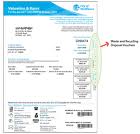Understanding your rates notice: a guide
Follow this link for the 2017 update of this story.
There’s a day each year when home owners are delivered what may be their most misunderstood bill: council rates.
These are calculated using a property valuation (which isn’t necessarily market value) against a rate in the dollar the council has deemed your contribution should be to meet forecast expenses.
Statewide the average bill for all properties – residential, commercial, industrial and farming – was $1135 in 2007.
WHO GETS IT? WHO SENDS IT?
A Notice of Valuation, Rates and Charges is sent annually to more than 2.5 million Victorian property owners.
They are circulated by 79 councils – 31 in metropolitan Melbourne and 48 in country Victoria.
WHAT DOES IT PAY FOR?
Victorian councils are responsible for more than $40 billion of infrastructure including roads, drains, town halls, libraries, recreation facilities, parks and gardens.
Councils maintain services including waste management, planning and some health services.
Almost three-quarters of the funds received by local councils come from rates, fees, fines and charges.
WHAT ARE THE DATES?
Notices, sent between August and September, are presently paid in a lump sum about February 15 or in instalments in October, November, February and May.
The bill sent this financial year use valuations from January 1 last year.
Councils revalue properties in their municipality every two years.
HOW RATES ARE CALCULATED?
Councils would need to employ hundreds of valuers to assess the $867b of of state private property.
Instead, they analyse information and inspect a sample to devise an estimate of the total value of properties in a municipality.
For example, the value of land and improvements in the Bass Coast Shire Council in south-east Victoria is about $7.8b.
Property in the City of Glen Eira is worth about $27.7b.
Once the council has a “base” figure, it will determine a rate in the dollar for each owner, which will be multiplied by one of three values.
• Capital Improved Value (CIV): the value of land and the improved value of the property (house, other buildings and landscaping);
• Site Value (SV): the unimproved value of the land, or
• Net Annual Value (NAV): calculated as 5 per cent of CIV for residential properties and the annual rental a property could achieve – less landlord expenses such as insurance, land tax and maintenance – for commercial and industrial properties.
For example, if a council needs $40m and the municipality’s property is worth $10b it would divide the latter by the former (a rate in the dollar of 0.004).
For a property with a CIV of $400,000, the general rates would equate to $1600 ($400,000 x 0.004).
A municipal and garbage collection charges is then added to determine how much total rates is payable on a property.
Ratepayers have the right to object a council valuation.
READING THE RATES NOTICE: WHAT DO THE TERMS MEAN?
• Rating Year: The period in which the rates notice is valid. Current notices are July 1, 2006, to June 30, 2007.
• Valuation Date: The last time your property was valued. This process is biennial. The next valuation is on January 1, 2008.
• Property Description: Should include the address and the property’s lot plan number.
• Site Value: The value of the land only.
• Capital Improved Value: The value of the land and improvements (house, landscaping). This amount is typically more conservative than a bank valuation or real estate agent’s appraisal.
• Note: Tells you which “valuation base” your council is calculating its rates on. The Municipal Association of Victoria says 90 per cent of rates are calculated using the CIV.
• Net Annual Value The annual amount a property could achieve if it was rented in the open market. Divide this by 52 to determine the weekly rental value of your commercial property. For residential property, this amount is 5 per cent of the CIV.
• Additional Charges Most councils charge extra for services such as garbage collection. A municipal charge can be applied by the council to each home owner to cover extra costs, but this can’t be more than 20 per cent of what the council is asking in rates.
• Late Payment Councils take legal action for recovery of unpaid rates and associated costs if a property owner ignores rates notices. Late payments accrue an interest charge of about 11 per cent a year.
• Payment Options Rates can be paid in one sum or in four instalments that can be paid online.
• Overleaf Frequently asked questions including topics such as land tax, pensioner concessions and how to object to valuations.
FAST FACTS:
Valuation process
To work out how much each property is worth council valuers analyse latest property sales and rental data, as well as considering other factors such as use of the land, shape, size, location, house value and other site improvements.
Council can use this information to forecast land value and a property’s “best use”.
Role of the valuer-general
The valuer-general Victoria (VGV) independently oversees the valuation and rating process to ensure statutory requirements have been met.
Only qualified valuers, those holding recognised tertiary qualifications, can perform municipal valuations.
Once the VGV is satisfied a council’s general valuation meets required standards, the minister declares it is generally true and correct and can be used by councils.
OTHER SOURCES OF COUNCIL REVENUE:
Council rates, fines and other charges contribute to 73 per cent of the infrastructure and services provided by councils. Councils receive the remainder of their finances through grants from the State and Federal governments, as well as from borrowings and other sources such as interest earned.








